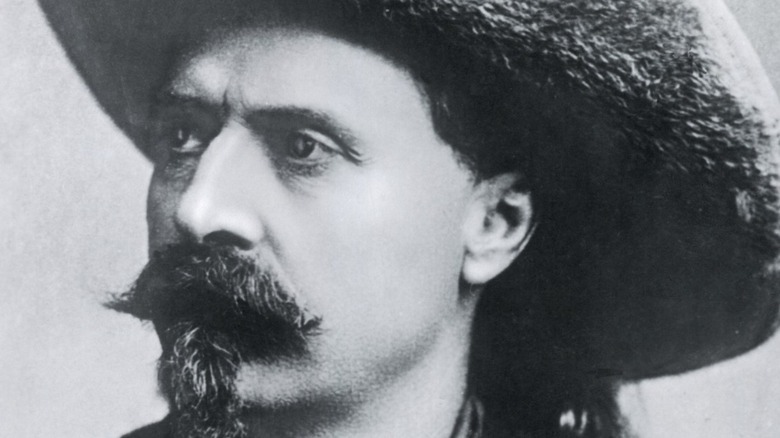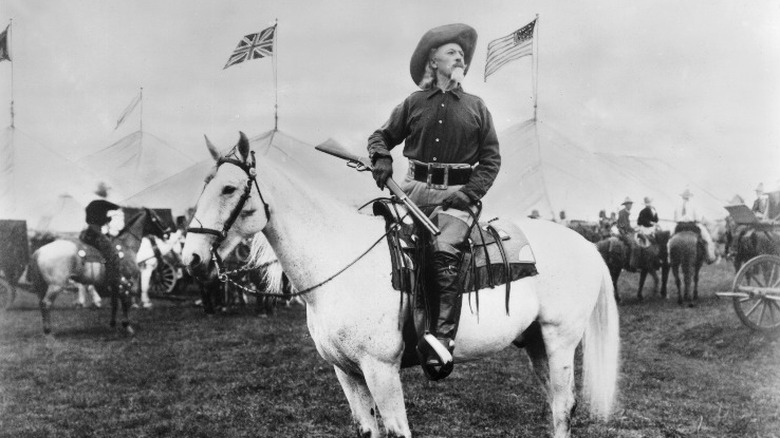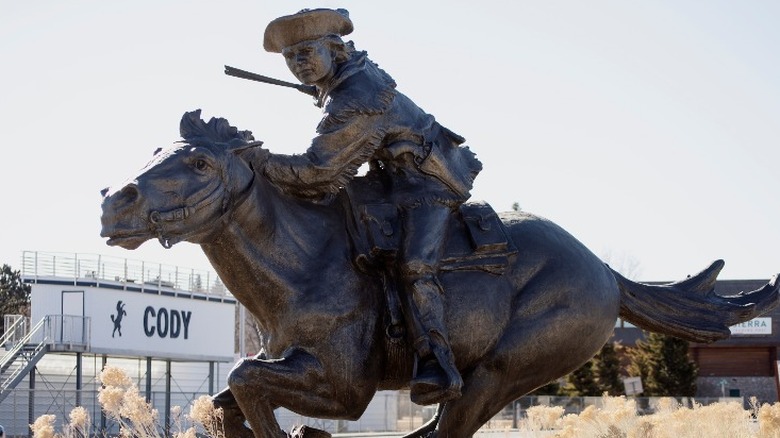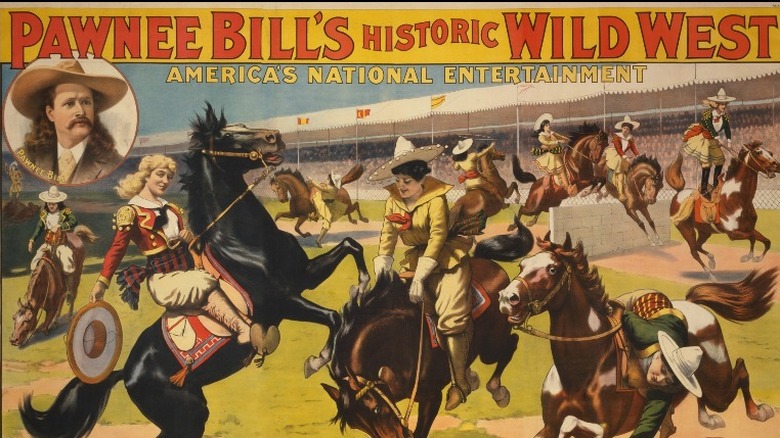Was Buffalo Bill In The Pony Express?
Buffalo Bill is one of the most recognizable names among the icons of the American Wild West. Born in rural Scott County, Iowa in 1846, William Cody managed to build quite the resume in his early years, before starting his famous touring "Wild West Show" (via Biography). Cody began as a messenger for a freight company when he was barely a teenager. By the time he was 14, he tried his luck as a prospector, mining gold during the famous Pikes Peak gold rush of 1859.
Cody's service to his country during the Civil War led to his post-war employment as army chief of scouts. Cody also worked to feed crews of railroad workers by killing hundreds of buffaloes near railroad construction lines. With a service that garnered him a nickname that would last beyond his lifetime, "Buffalo" Bill Cody knew many parts of the western United States better than most of his contemporaries. No doubt, his various forms of employment and business ventures were responsible for this vast amount of expertise.
One item on Cody's detailed list of accomplishments remains a little murky, however. In his later writings, Cody claimed to have been employed as a Pony Express rider at the age of 14. In his short-lived stint as a rider, Cody was covering a mail route inside the Wyoming territory, carrying mail by speedy horseback to and from handoff points.
But did Buffalo Bill Cody really work as a rider for the Pony Express, or was this just a way to make his Wild West show and storytelling more exciting for paying customers?
The evidence in support . . .
Cody began working as a courier, carrying messages by horseback for Majors and Russell, a freight company (via Wyoming History). His runs were between Leavenworth, Kansas (company headquarters) and the telegraph office in Fort Leavenworth, approximately three miles away. This company grew into Russell, Majors, and Waddell, the same company that started the Pony Express. Cody lore claims that he was recruited to make runs for the 76-mile Pony Express route that ran from modern-day Casper, Wyoming to Three Crossings, following the Sweetwater River.
Cody recalls his time with the Pony Express in his book "An Autobiography of Buffalo Bill." He wrote of attacks on him and his horse by local Indigenous people, exposure to severe weather, and other hazards of the job he faced on a day-to-day basis. While this book is the only written verification for Cody being a Pony Express rider, many historians will defend the claims contained therein.
Adding to the case for Cody telling the truth about his Pony Express rides are the founders and owners of the company themselves, Russell, Majors, and Waddell. Throughout the run of Cody's Wild West show, not one of the owners ever denied that Cody was in their employ, says True West Magazine.
. . . and the evidence against
While some accounts put Cody in the area of Wyoming where his alleged Pony Express route was ridden, others seem to contradict his location. According to Wyoming History, Cody was enrolled in school during the entire duration of the Pony Express's existence. This mail delivery system was only in operation for a 19-month stretch from April 1860 to October 1861, making it impossible, according to this source, for Cody to have made any of the rides.
Others point out that Cody's account of the Pony Express was less than accurate. Wyoming History insists that Cody's details are murky, and not consistent with the actual route that the Pony Express rider would have really followed. Anyone who had actually ridden this route so many times, they argue, wouldn't be as far off as Cody was in his book, with his claims sometimes dozens of miles off the real course.
Buffalo Bill's contributions to Pony Express History
Whether he actually rode for the Pony Express, there's no arguing against the fact that Cody was instrumental in keeping the public interested in this short-lived mail delivery system. His Wild West show had the Pony Express demonstration as one of its most popular features. Crowds would gather around as a small rider would gallop at full speed into view, only to suddenly stop, dismount, and mount a waiting horse, only to speed off again. The Pony Express part of the act was replayed over and over again to attendees in the United States and all over Europe, introducing the lore of the Pony Express to the delight of people in more than half a dozen countries (via University of Chicago Press).
To be truthful, it's a hard case to prove either way. As there are sparse employment records in existence for those who rode for the Pony Express, one could say the lack of verification could be used as a case for, or against, Cody actually being a rider. A real rider or not, Cody was responsible for keeping this bit of United States history alive for generations.



